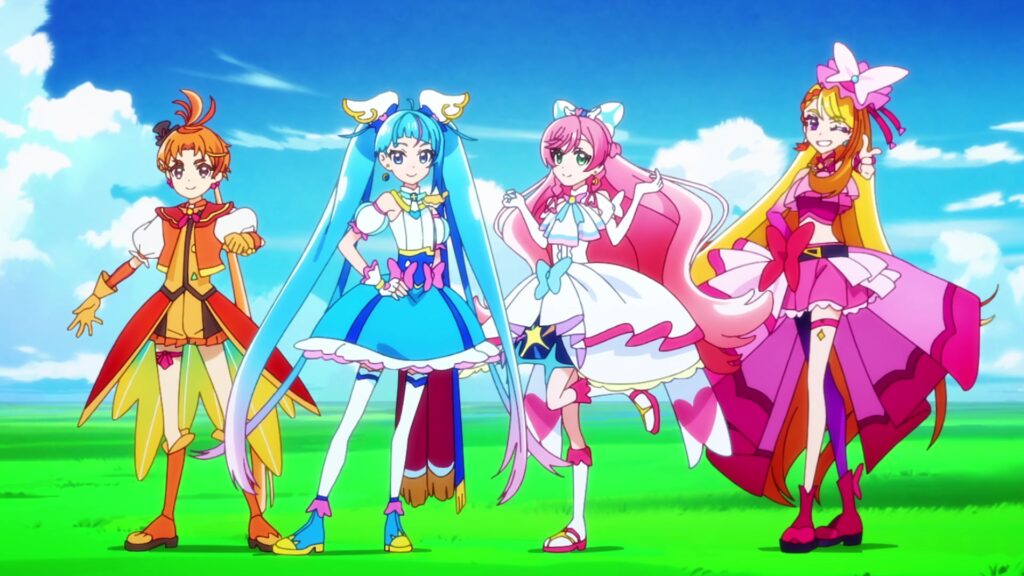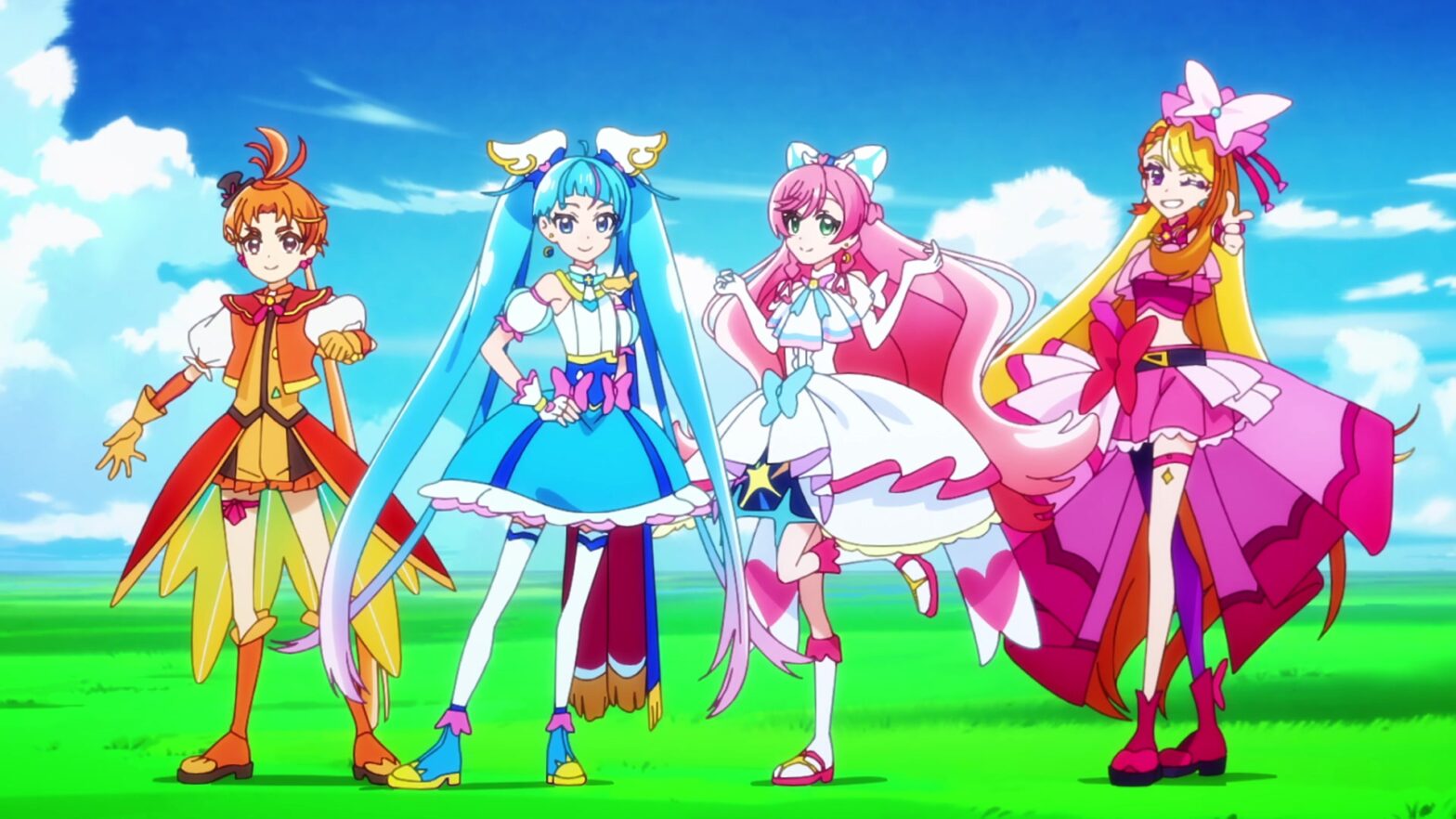Anime Review: Soaring Sky! Pretty Cure (Japanese title: “Hirogaru Sky! Precure”)
Pretty Cure is a franchise series of anime shows aimed at preteen girls, which began in 2004 with Futari wa Pretty Cure (“We Two are Pretty Cure”). The recurring basic plot is that girls in their early teens are given magical items (usually by “fairies”) that allow them to turn into heroic magical girls called “pretty cure” (usually shortened to “Precure”) and fight the evil menace du jour. Most seasons feature an entirely new set of girls (the better to sell toys!) and while some of the stories take place on the same Earth and there are frequent crossover specials, continuity is not tight.

“Soaring Sky” is the twentieth anniversary season, with a theme of “heroism” (“Hirogaru” means “soaring” but puns as “Hero Girl”) and a motif of the sky.
Sora Harewataru is a resident of Skyland, a magical kingdom consisting of sky islands where humans coexist with talking birds. Having been rescued as a (younger) child by Captain Shalala of the royal Azure Guard, she’s trained in physical capabilities and martial arts so that she can join their heroic ranks. As she’s approaching the capital to apply, Sora spots the piggish villain Kabaton kidnapping the infant Princess Elle, presumably for nefarious purposes.
Sora battles the villain, proving capable even without special powers, but Kabaton tries to teleport himself and his captive away using the chthonic Undergu Energy he’s attuned to. Sora follows into the portal, screwing up the process and landing all three on Earth in a place called Sorashido City. Part of why Elle is important is revealed–she has the ability to summon devices that bring out the latent power in worthy people, allowing them to transform into Pretty Cures!
As Cure Sky, Sora temporarily defeats Kabaton, who teleports away, leaving her and Princess Elle stuck on Earth. They are given shelter by local girl Mashiro Nizigaoka and her grandmother Yoyo. This is not entirely coincidence as Yoyo is originally from Skyland herself, a sage that came to study Earth, fell in love, and stayed. The more traditionally “girly” Mashiro and “tomboyish” Sora become fast friends, and Mashiro soon becomes Cure Prism. Her gentle compassion is shown to be just as valid a form of heroism as Sky’s physical combat.
They are soon joined by Cure Wing, Tsubasa Yunagi. He is also from Skyland, having fallen to Sorashido City during an earlier storm. While on Earth, he’s studying the science of aeronautics to help with his lifelong dream of being able to fly. He’s the first boy to be a full-time Precure on the main team, and has another wrinkle I’m not going to spoil.
Rounding out the initial team is Ageha Hijiri, an older friend of Mashiro’s who’s in training to become a preschool teacher. As Cure Butterfly, she’s the first legal adult to be a full-time Precure on the main team. Her being able to drive a Hummer comes in handy!
There’s a late-season addition to the team, but that really gets into spoiler territory.
Kabaton turns out to be working for the Undergu Empire, run by the Undergu Empress. We don’t get a lot of information on what that means, exactly, until much later. In most of his episodes, he uses the chthonic Undergu Energy to turn ordinary objects into monsters of the week called Ranborgs. When he’s finally defeated, another “general’ of the Undergu Empire takes over, and this happens a couple more times. Each “general” has a contrasting personality, but all of them follow the “strength is everything” (might makes right) philosophy of the Empire.
While there’s a general plot progression, most of the episodes are self-contained. We see Elle experience milestones as a toddler, Sora discovering Earth customs like baseball and Halloween, small emotional crises and some general faffing about. Generally cute and heartwarming.
As is traditional for magical girl series, there’s a lot of recycled footage of transformation sequences. It swiftly gets boring for adults, but kids appreciate the ritual.
If there’s a major flaw in this season, it’s the fourth general. After a very promising start that made him look like a genuine threat, he became a null-charisma character that seemed to be sending a monster once an episode due to contractual obligation, marking time until the finale and the plot picking back up.
The ending was fitting for the season and themes of the story. I shed a tear where expected.
Content note: Superhero style-violence, children often in mild peril. A few episodes have more serious peril, and there’s a shocking death in the backstory that might upset younger or more sensitive kiddos.
Overall: I am told this is one of the better seasons of Pretty Cure–since it’s my first, I can’t compare. But it seems quite nice for a toyetic series, with some good messaging and likable characters. Preteen girls should especially enjoy it, but it won’t hurt boys to watch, and parents and older fans should be able to enjoy it as well. Recommended.

